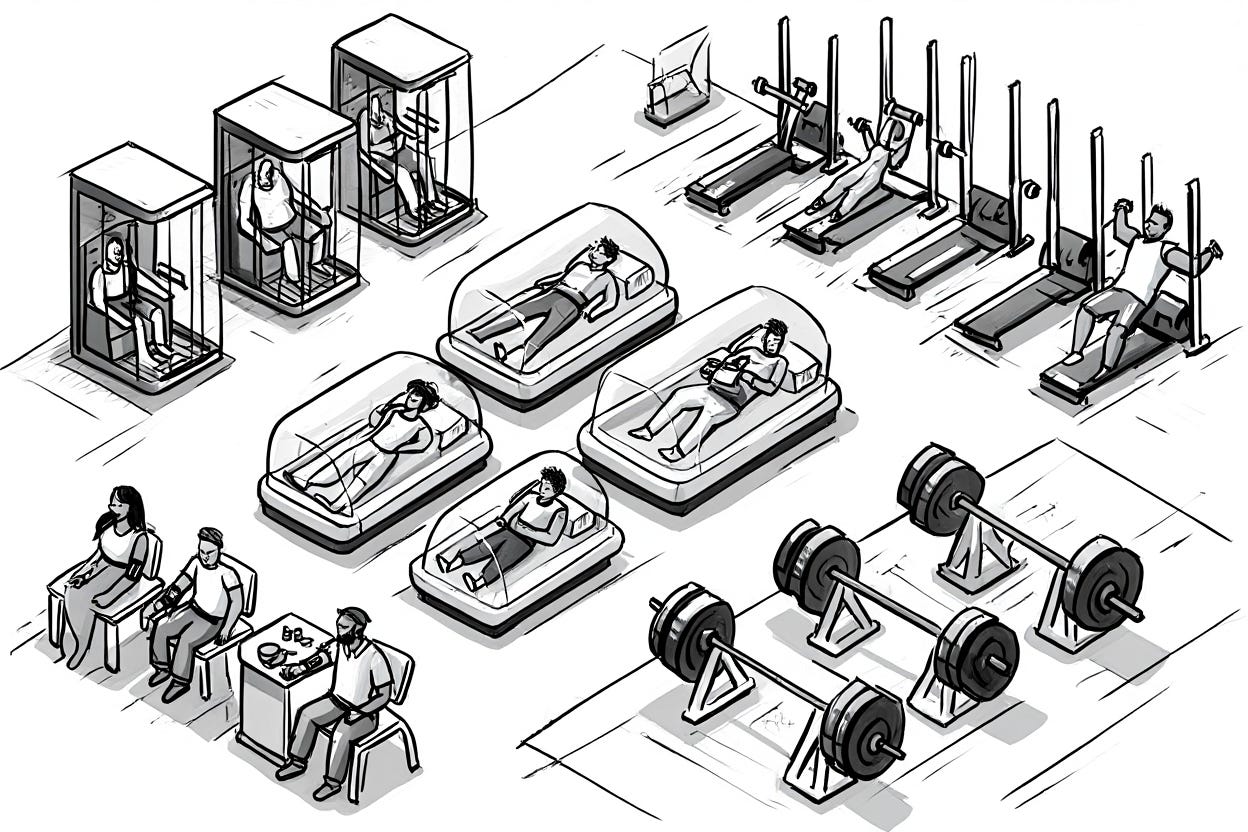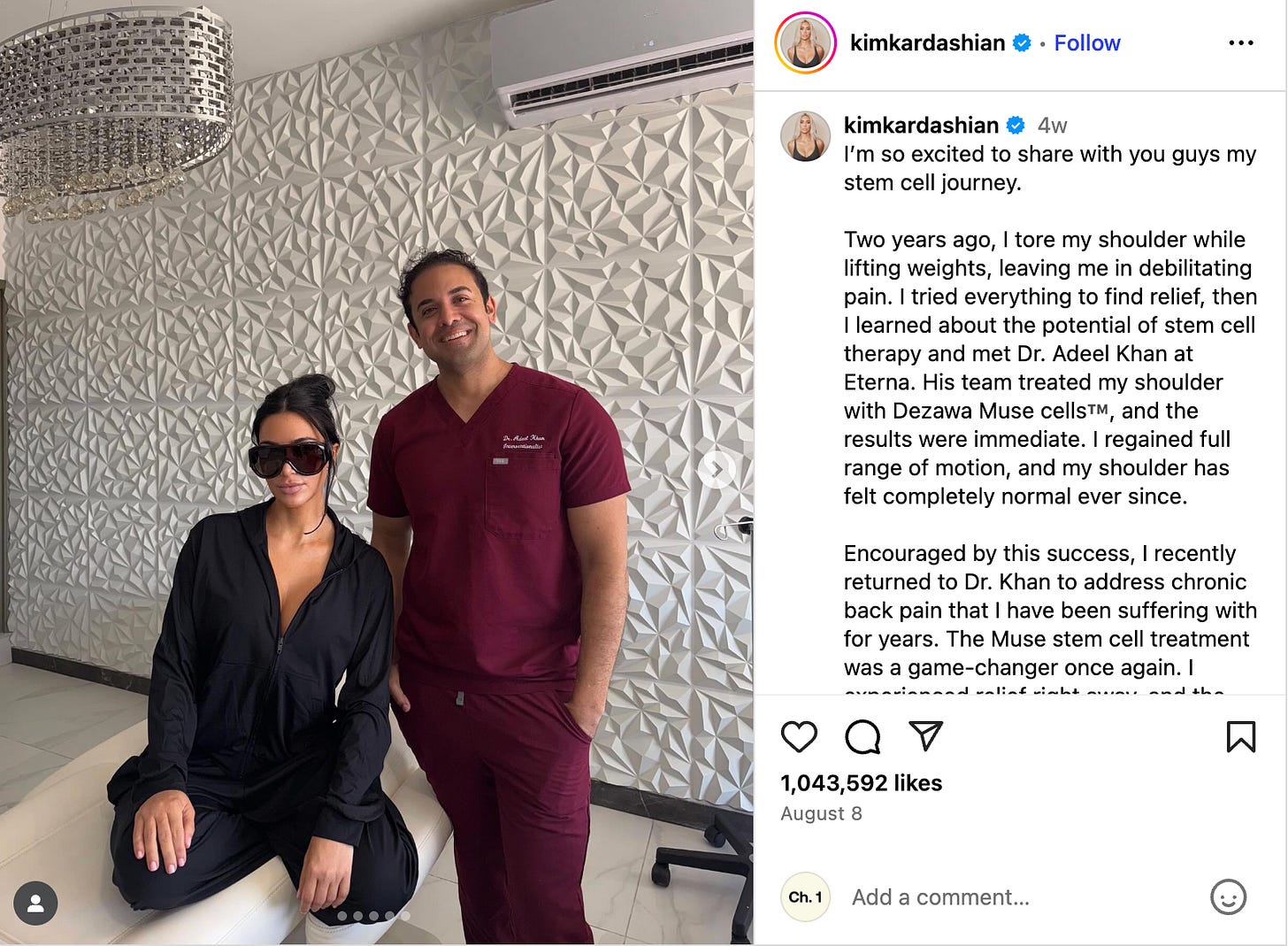The New Status Game: Longevity
I ran into an investor friend who was summering in California. He ordered a glass of Santa Barbara pinot and told me: “I didn’t drink for a year. Then on New Year’s I woke up and realized how boring my life had become. So I had a few drinks that day, and suddenly life had color again.”
When I asked why he quit in the first place, the answer was simple: better sleep, fewer distractions, full immersion in work.
He’s the type who goes all in, which is part of what makes him world-class. So when he discovered longevity, he didn’t dabble. He installed a hyperbaric chamber, bought an infrared sauna, and swapped happy hours for tennis matches.
A year later, he’d landed on a middle ground. Still disciplined, but now sipping a couple of glasses of wine. Nothing extreme. And he seemed lighter, even happier.
Listening to him explain his new regimen, I realized how far we’d drifted from our twenties. Back then it was shots of top-shelf tequila. Now it’s top-shelf supplements and IV shots of NAD+.
In Los Angeles, status used to mean a G-Wagon in the driveway, a Nobu reservation, a Riviera golf membership, or a Bird Streets house “next to Leo.”
That game isn’t gone, but the subtler flex now looks less like Rodeo Drive and more like a medical lab.
The question isn’t “What car are you driving?” It’s “What’s your protocol?”
Designer closets have given way to microdosing GLP-1. Hollywood Bowl tickets have been swapped for Hyrox race entries that sell out faster than Coachella.
Bryan Johnson, Andrew Huberman, and Peter Attia are the new A-listers. Nobody’s quoting movies anymore, but everyone’s comparing T levels.
In tech WhatsApp groups, biomarker screenshots now circulate with the same energy Porsche waitlist confirmations once did.
Even the biggest celebrities have joined in, turning their “health journeys” into content. In August, the Kardashians flew to Mexico for stem-cell therapy banned in the U.S., a ban that only made it more exclusive. Naturally, it became both an Instagram flex with a million likes and a tabloid headline.
Part of it is just age. My friends are getting older, and the ones with early-adopter instincts—and money—have found a new playground in personalized medicine.
The same people who once hunted obscure apps or underground music are now swapping supplement stacks and sleep hacks.
COVID accelerated it. Locked indoors, people built home gyms, experimented with diets, and turned longevity from a fringe hobby into a mainstream obsession.
The old signals also got boring. A Ferrari says money. A cold plunge says enlightenment.
And it’s not only millennials and middle age.
For younger New Yorkers, longevity isn’t about hacking DNA. It’s about escaping the chaos of city life and maybe finding a date.
On Saturdays, Bathhouse in Tribeca is the new brunch table. Forget bottomless mimosas. The real weekend move is sweating with strangers and hoping your soulmate shows up somewhere between the sauna and your third cold plunge. Contrast therapy is the new Tinder.
Sure, the longevity craze might look ridiculous from the outside at times. But it’s ridiculous with benefits. A Patek Philippe watch tells you the time, but an Apple Watch tells you your heart rate, sleep score, and how much stress you’re under.
At some point in my thirties, I realized health is the best ROI. Lose it and you’re only half-present at home, at work, and everywhere in between. I’d take a Prenuvo scan over another luxury purchase any day. Health compounds; things depreciate.
But like my friend who found a middle ground, I’ve come to see that joy matters too. Sometimes longevity means the glass of wine, the night out, the moment that keeps you human.
The old adage was that money can’t buy time. These days, that may no longer be entirely true.
Now excuse me, my biomarkers are waiting.







Surprisingly this is true because an entrepreneur friend shared this with me :))
Hopefully youthful health becoming a covert status-signal means more attention and funding to the field of geroscience. But how long will the hype last? Will the longevity movement be sustained by fads? Or truly high-impact papers that unlock unexplored territories in the protocolspace? I think about the longevity of the longevity movement.